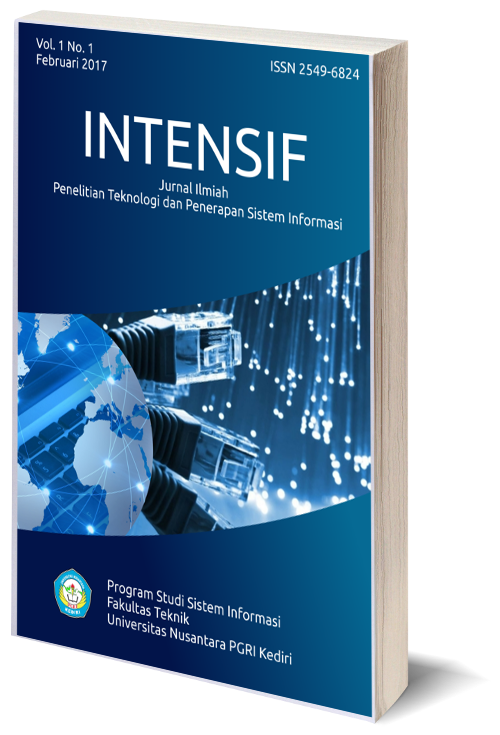Pemodelan Sistem Data Terdistribusi Untuk Mengintegrasikan Data Akademik Dan Keuangan
DOI:
https://doi.org/10.29407/intensif.v1i1.542Keywords:
Database Engine, Integrasi data, platform software, UMLAbstract
Data is something that is very important specifically for the needs of a company or organization, which from the data can produce a useful information for the company or organization as a material for development as well as for data analysis as the basis for decision-making. With the development of the world of digital technology is growing nowadays, the data originally stored in paper form can now be stored in digital form by utilizing database engine. If a company or organization already has data scattered in several separate places or developed with several different types of software platforms. Of course, a technique is required to integrate data from several different places and use different types of software platforms. With the existence of this data integration it is possible to combine separate data in multiple places and use several different types of software platforms.
Downloads
References
Ahmad Haidar Mirza, “Perancangan Basis Data Terdistribusi E-CARGO (Studi Kasus PT. XYZ)”, Seminar Nasional Informatika, UPN ”Veteran” Yogyakarta, 18 Juni 2013.<br>
Febri Nova Lenti1, “Rekayasa Database Terdistribusi Pada Layanan Pemesanan Tiket Pesawat
Terbang” Jurnal Teknologi Technoscientia, Vol. 6 No. 2 Februari 2014.<br>
Munawar, “Pemodelan Visual Dengan UML”, Graha Ilmu Edisi Pertama, 2005.</p>
Downloads
Published
Issue
Section
License
Authors who publish with this journal agree to the following terms:
- Copyright on any article is retained by the author(s).
- The author grants the journal, the right of first publication with the work simultaneously licensed under a Creative Commons Attribution License that allows others to share the work with an acknowledgment of the work’s authorship and initial publication in this journal.
- Authors are able to enter into separate, additional contractual arrangements for the non-exclusive distribution of the journal’s published version of the work (e.g., post it to an institutional repository or publish it in a book), with an acknowledgment of its initial publication in this journal.
- Authors are permitted and encouraged to post their work online (e.g., in institutional repositories or on their website) prior to and during the submission process, as it can lead to productive exchanges, as well as earlier and greater citation of published work.
- The article and any associated published material is distributed under the Creative Commons Attribution-ShareAlike 4.0 International License












